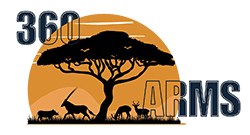Welcome to 360 Arms
Where precision meets customization in the world of gun stocks and product fitment.
With our expertise in custom gun stocks and meticulous attention to fitment, we’re dedicated to enhancing your shooting experience with tailor-made solutions.
Reloading Excellence
Precision and consistency are paramount, whether you’re a seasoned marksman or new to shooting.
Our reloading advice is tailored to help you achieve top-notch results with every shot.
- Expert Guidance: Benefit from the expertise of our experienced reloaders. We provide comprehensive advice on component selection and powder optimization to maximize your reloading success.
- Streamlined Process: We’ll guide you through the reloading process step by step. Our tips and techniques will help you save time and resources while achieving superior results.
- Continuous Improvement: Stay ahead with the latest reloading innovations. Count on us to keep you informed about new techniques and technologies to refine your skills and enhance your reloading experience.
Custom Gun Stocks and Prefits
Tailored Solutions:
Partner closely with our seasoned craftsmen to develop a custom gun stock precisely tailored to your individual shooting preferences and style.
- Material Options: Explore an extensive selection of materials, from traditional woods to cutting-edge synthetics and specialized ergonomic designs.
- Precision Craftsmanship: Meticulously handcrafted stocks ensure flawless fit and optimal performance for various firearm models.
Expert Fitment and Bedding, Rifle Restoration, and Maintenance
Comprehensive Assessment:
Thorough evaluation ensures proper fitment and functionality of every component.
- Maximizing Performance: Achieve accuracy and comfort through meticulous fitment and attention to detail.
- Individualized Attention: Tailored fitment services cater to diverse shooting styles and preferences.
- Rifle Restoration and Maintenance: Skilled craftsmen handle all aspects of restoration and upkeep with care and precision.
Personalized Solutions
Customized Approach:
Personalized solutions meet the unique needs of every shooter, from precision accuracy to durability and aesthetics.
- Consultative Process: Collaborative approach involves shooters in every step, ensuring solutions exceed expectations.
- Versatility: Custom gun stocks and fitment services accommodate various shooting disciplines and styles.
Craftsmanship and Quality
Uncompromising Standards:
Dedication to excellence ensures products meet the highest standards of performance and durability.
- Finest Materials: Only premium materials are used, ensuring durability, reliability, and aesthetic appeal.
- Attention to Detail: Meticulous craftsmanship guarantees exceptional performance in the field.
Get in Touch
Elevate your shooting experience with custom gun stocks and fitment services. Contact us at reloading@360arms.co.za to discuss your needs and start the journey toward a personalized solution.
Load Data Guide: Expanded
Loading ammunition is both a science and an art, requiring precision, consistency, and a deep understanding of the components involved. Here’s a comprehensive guide based on general principles and techniques to help you achieve consistent and accurate loads.
Components and Tools Needed
- Brass:
- High-Quality Brass: Use high-quality brass from reputable manufacturers like Lapua, Norma, or Peterson. These brands offer brass with consistent dimensions and metallurgy, which is crucial for accuracy.
- Brass Preparation: Ensure your brass is cleaned, trimmed, and prepared uniformly. Clean brass improves consistency in chambering and firing.
- Bullets:
- Match-Grade Bullets: Choose match-grade bullets from manufacturers such as Sierra, Hornady, or Berger. These bullets are manufactured to tight tolerances, offering consistent weight and shape, essential for accuracy.
- Bullet Selection: Select the bullet weight and type based on your rifle’s barrel twist rate and intended use (e.g., target shooting, hunting).
- Powder:
- Suitable Powder: Use powders that are appropriate for your specific cartridge. Popular choices include Hodgdon, Alliant, and IMR powders. Each powder has different burn rates that affect velocity and pressure.
- Powder Storage: Store powder in a cool, dry place to maintain its stability and performance.
- Primers:
- Match Primers: Use match primers like Federal Gold Medal or CCI BR for consistent ignition. Primers affect the uniformity of the burn, impacting accuracy.
- Primer Handling: Handle primers with care, avoiding contamination from oils and dirt.
- Reloading Press:
- Single-Stage or Progressive Press: Choose between a single-stage press for precision and control or a progressive press for speed and efficiency.
- Press Setup: Ensure the press is securely mounted and calibrated correctly for consistent operation.
- Powder Scale:
- Digital or Balance Beam Scale: Use a precise scale to measure powder charges. Digital scales offer ease of use, while balance beam scales provide reliability.
- Calibration: Regularly calibrate your scale to ensure accurate measurements.
- Case Trimmer:
- Consistent Case Length: Trim cases to a uniform length to ensure consistent seating depth and chamber fit.
- Trimming Tools: Use a reliable case trimmer and chamfering tools to prepare case mouths for smooth bullet seating.
- Bullet Seating Die:
- Consistent Bullet Seating: Use a bullet seating die that provides uniform seating depth and minimal runout.
- Die Adjustment: Adjust the die to achieve the desired overall length (OAL) and cartridge base to ogive (CBTO).
- Calipers:
- Measurement Accuracy: Use digital or dial calipers to measure OAL and CBTO accurately.
- Regular Calibration: Calibrate calipers regularly to maintain measurement precision.
- Chronograph:
- Velocity Measurement: Use a chronograph to measure the velocity of your loads, providing data for fine-tuning and consistency checks.
- Placement: Set up the chronograph correctly to avoid errors from muzzle blast or lighting conditions.
Step-by-Step Reloading Process
- Inspect and Clean Brass:
- Visual Inspection: Check each brass case for cracks, splits, or deformations. Discard any damaged cases to ensure safety and reliability.
- Cleaning Methods: Clean brass using a tumbler with media, an ultrasonic cleaner, or wet tumbling with stainless steel pins to remove dirt, carbon, and old lubricant.
- Size the Brass:
- Full-Length Resizing: Use a full-length resizing die to resize the brass, ensuring it fits your chamber correctly and functions smoothly in your rifle.
- Neck Sizing (Optional): For fire-formed brass used in the same rifle, consider neck sizing to preserve the brass’s fit to your chamber, which can enhance accuracy.
- Trim and Chamfer Brass:
- Trimming: Trim the brass to the correct length using a case trimmer. Consistent case length ensures uniform bullet seating and crimping.
- Chamfer and Deburr: Chamfer the inside and deburr the outside of the case mouth to remove any sharp edges and facilitate smooth bullet seating.
- Prime the Brass:
- Priming Tools: Use a hand primer or press-mounted priming system to seat primers consistently.
- Priming Technique: Ensure primers are seated to the correct depth, flush with or slightly below the case head. Consistent primer seating pressure helps maintain uniform ignition.
- Charge the Brass with Powder:
- Powder Measurement: Use a powder measure or trickler to dispense the correct powder charge. Verify each charge with a scale for accuracy.
- Uniform Charges: Ensure each case receives the same powder charge for consistent performance.
- Seat the Bullets:
- Bullet Seating Die: Use a bullet seating die to seat bullets uniformly.
- Measurement: Measure the overall length (OAL) and cartridge base to ogive (CBTO) to ensure consistency across all loaded rounds.
- Crimp the Bullet (Optional):
- Light Crimp: Depending on your specific needs, apply a light crimp using a crimp die. Crimping can improve bullet retention and ensure reliable feeding, particularly in semi-automatic firearms.
Load Development and Testing
- Start with Published Data:
- Manufacturer Manuals: Refer to reputable reloading manuals and manufacturer data for starting loads and maximum charges.
- Safety Margin: Begin with the minimum recommended powder charge and work up in small increments (e.g., 0.2-0.3 grains) to find the optimal load.
- Load Test Rounds:
- Small Batches: Load small batches (5-10 rounds) for each powder charge increment. Label each batch for identification.
- Documentation: Keep detailed records of the components, charge weights, and measurements for each batch.
- Test for Accuracy and Velocity:
- Chronograph Setup: Use a chronograph to measure the velocity of each batch. Place the chronograph at a consistent distance from the muzzle to ensure accurate readings.
- Shooting Groups: Shoot groups at a consistent distance (typically 100 yards) to test for accuracy. Use a stable shooting platform and maintain consistent shooting techniques.
- Evaluate Results:
- Velocity Consistency: Look for consistent velocity readings with low standard deviation (SD) and extreme spread (ES). Consistency in velocity contributes to accuracy.
- Group Sizes: Evaluate group sizes to identify the most accurate load. Look for tight, round groups as an indicator of a good load.
- Fine-Tune the Load:
- Adjustments: Once a promising load is identified, fine-tune by adjusting the powder charge or seating depth. Make small changes and test for improvements.
- Verification: Perform additional testing to verify the consistency and accuracy of the refined load.
Tips and Techniques
- Consistency is Key:
- Uniform Procedures: Ensure every step of the reloading process is consistent, from brass preparation to bullet seating.
- Quality Control: Use high-quality components and tools to minimize variables and improve accuracy.
- Chronograph Usage:
- Data Collection: Use a chronograph to gather velocity data for each load. Analyze the data for trends and consistency.
- Optimal Conditions: Set up the chronograph in optimal lighting conditions and at a consistent distance from the muzzle to avoid errors.
- Seating Depth:
- Experimentation: Experiment with seating depth to find the optimal bullet jump for your rifle. Different bullets and rifles may require different seating depths for best accuracy.
- Comparator Tool: Use a comparator tool to measure CBTO for more precise seating depth. This measurement is more consistent than overall length (OAL).
- Brass Preparation:
- Uniform Primer Pockets: Uniform primer pockets and flash holes for consistent ignition and performance.
- Annealing: Periodically anneal brass to extend brass life and maintain consistency. Annealing softens the neck and shoulder area, reducing work-hardening and improving case life.
- Record Keeping:
- Detailed Records: Keep detailed records of your load data, including components, measurements, and performance results. Use a reloading logbook or digital spreadsheet.
- Data Analysis: Analyze your data to refine and improve your loads over time. Look for patterns and trends that indicate the most consistent and accurate loads.
Safety Precautions
- Always Follow Manufacturer Guidelines:
- Published Data: Adhere to recommended load data and do not exceed maximum charges to avoid dangerous pressure levels.
- Component Compatibility: Ensure all components are compatible with your specific firearm and cartridge.
- Work in a Safe Environment:
- Clean and Organized: Ensure your reloading area is clean, organized, and free of distractions to minimize the risk of errors.
- Proper Ventilation: Work in a well-ventilated area to avoid inhaling fumes from primers and powders.
- Wear Protective Gear:
- Safety Glasses: Always wear safety glasses to protect your eyes from potential hazards like primer detonation or flying debris.
- Hearing Protection: Use hearing protection

Francois Smit
Reloading Guid
Reloading for 45Years and experienced shooter.
Experienced hunter and retired PH
Based in Henties bay Namibia.



